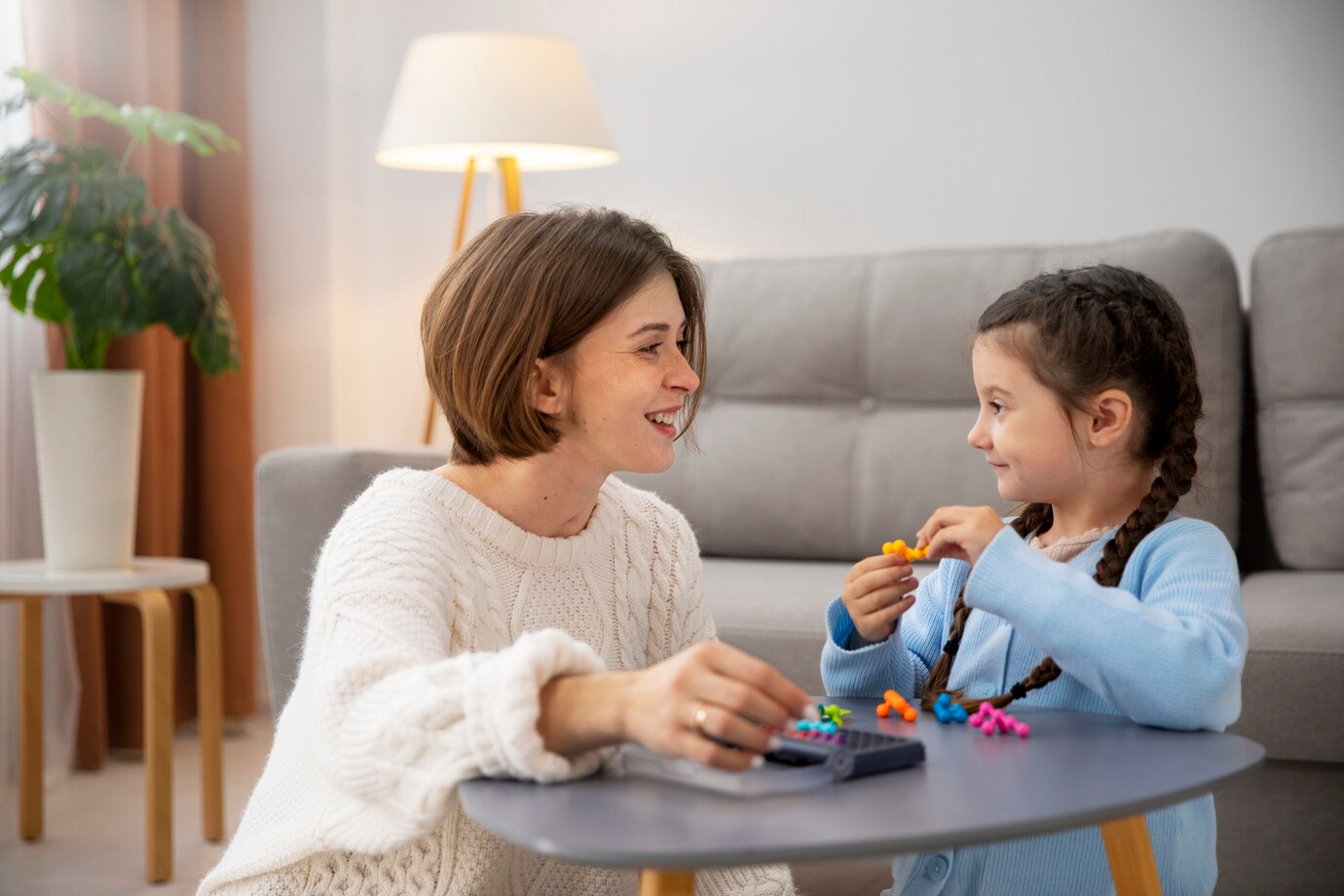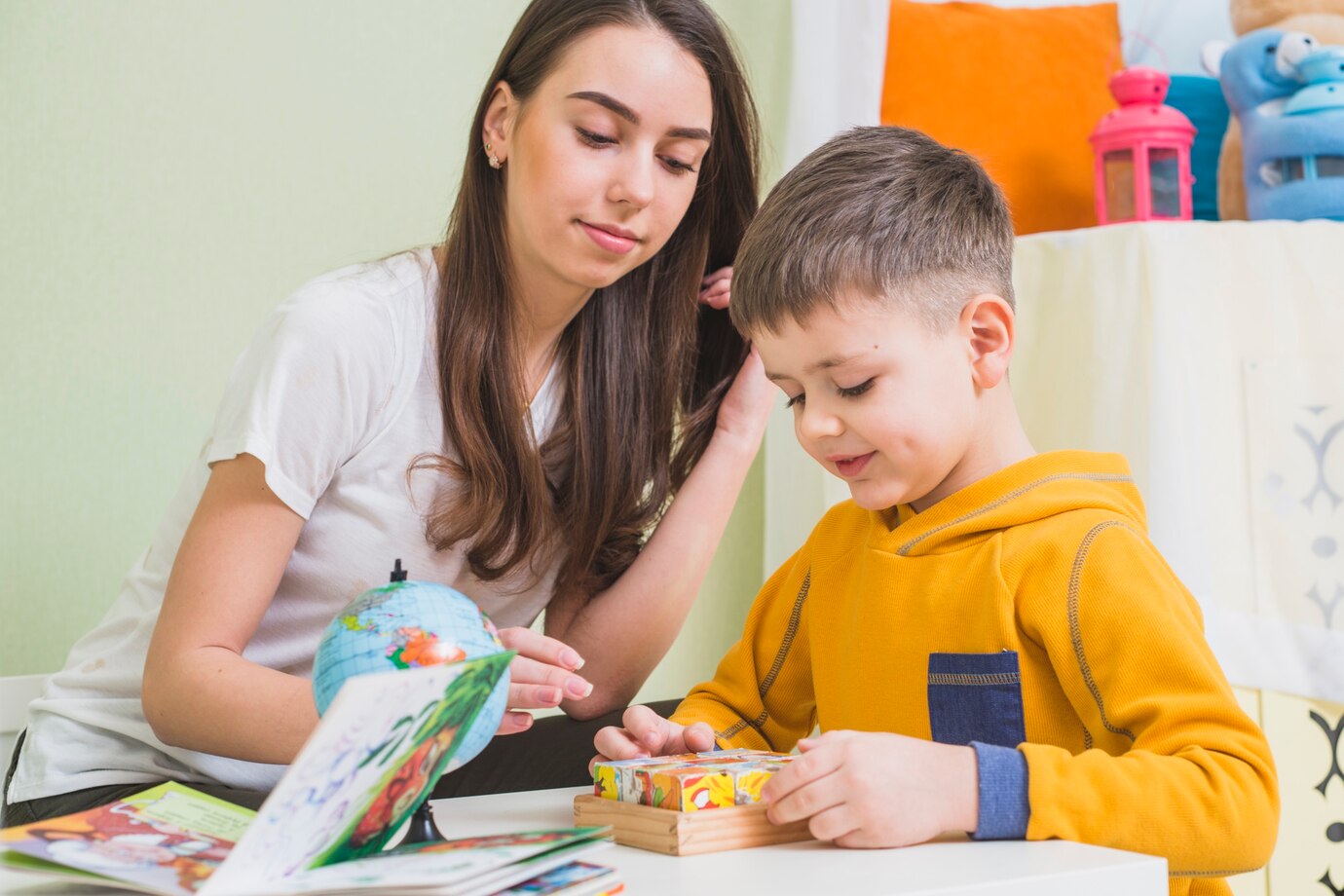
Teaching Kids Problem-Solving Skills for Life
The skills that help children solve problems are more crucial to our world today than ever. As they move into adulthood, we want them to be secure, independent, and well-equipped to handle whatever life hands them. This will certainly happen, and teaching our children how to solve problems effectively will surely help. In this blog post, we will explore why it is important for someone to have problem-solving skills. It offers suggestions for teaching those skills and encouraging reasoning among kids.
Why Teaching Problem-Solving Skills Matters

Problem-solving is not just an academic skill; it’s a life skill. It forms the foundation of critical thinking for kids. It enables them to approach challenges methodically and creatively. Teaching kids to solve problems helps them handle conflicts, make smart choices, and build resilience.
Real-Life Applications
Consider a child faced with a playground disagreement. A child with strong problem-solving skills looks at the situation. They think about possible solutions and pick the best one. This skill goes beyond playgrounds. It helps them face future challenges in school, relationships, and jobs.
Long-Term Benefits
Kids with strong problem-solving skills usually have more self-confidence. They adapt better and often perform better in school. They learn to approach difficulties with a growth mindset, making them more resilient in facing obstacles.
How to Teach Problem-Solving
Teaching problem-solving skills can be an engaging and rewarding process. Here’s a step-by-step guide to help you nurture these skills in children:
Step 1: Encourage Curiosity
Encourage children to ask questions and explore the world around them. Curiosity is the engine of problem-solving. When kids are curious, they naturally seek answers and solutions. Give them hands-on learning experiences. Try science experiments or building projects. These activities help them discover how things work.
Step 2: Model Problem-Solving Behaviour
Children learn by observing adults. Demonstrate how you approach problems in daily life. Whether fixing a broken toy or planning a family outing, talk through your thought process and decision-making. Show them that encountering obstacles is normal and that persistence leads to solutions.
Step 3: Introduce Age-Appropriate Challenges
Present children with challenges that match their developmental stage. For younger kids, this might be simple puzzles or games. As they grow, they introduce more complex problems that require deeper thinking. Escape rooms, strategy games, and role-playing can boost problem-solving skills.
Step 4: Teach the Problem-Solving Steps
Guide children through the problem-solving process:
- Identify the problem
- Brainstorm possible solutions
- Evaluate each solution
- Implement a plan
- Reflect on the outcome
Encourage them to think critically at each step and adapt their approach when necessary.
Step 5: Encourage Teamwork and Collaboration
Problem-solving is often a collaborative effort. Get kids involved in teamwork activities. Have them build a structure with limited materials or solve a mystery together. This helps them learn to communicate their ideas and consider different perspectives.
Best Ways to Develop Reasoning Skills

Reasoning skills are the backbone of problem-solving. Here are some effective strategies to develop these skills in children:
Encourage Open-Ended Questions
Ask questions that require more than a yes or no answer. Open-ended questions stimulate thinking and encourage children to express their thoughts and reasoning. For example, instead of asking, “Did you have fun today?” try asking, “What was the most interesting thing you did today and why?”
Promote Critical Thinking for Kids
Critical thinking involves analysing and evaluating information. Involve kids in activities that boost critical thinking. For example, they can sort and classify objects. They can also compare and contrast different items. Finally, encourage them to predict outcomes. Explore situations that make them think logically. Examples include ethical dilemmas and historical debates.
Use Real-World Scenarios
Incorporate real-world scenarios into learning. This could be as simple as planning a family meal or organising a charity event. These activities help kids use reasoning in real-life situations. They also learn how their choices can affect outcomes.
Introduce Logic-Based Games and Puzzles
Games like chess, Sudoku, and logic puzzles help kids think strategically. They encourage decision-making and logical reasoning. These activities enhance cognitive skills while making learning fun and engaging.
Additional Expert Tips & Common Mistakes to Avoid
While teaching problem-solving skills, it’s essential to be aware of common pitfalls and how to avoid them:
Avoid Over-Helping
It’s natural to want to help children succeed. However, stepping in too quickly can hinder their ability to solve problems independently. Instead, allow them to struggle and find solutions on their own, offering guidance only when necessary. Resist the urge to give immediate answers and instead ask guiding questions that lead them toward a solution.
Encourage Perseverance
Problem-solving often requires persistence. Encourage children to keep trying, even when solutions aren’t immediately apparent. Celebrate their efforts and progress, not just the result. Teach them that mistakes are opportunities to learn and improve.
Balance Structure with Freedom
Giving structure and guidance is important. Children should also have the freedom to explore and make decisions on their own. Giving them autonomy in decision-making fosters a sense of responsibility and independence.
Advanced Insights & Expert Recommendations
For those looking to deepen their children’s problem-solving abilities, consider these advanced strategies:
Foster a Growth Mindset
Teach children that intelligence and abilities can be developed through effort and learning. A growth mindset encourages resilience and a willingness to tackle challenges. Praise their efforts rather than just their successes. This reinforces the idea that improvement comes through practice.
Incorporate Technology
Utilise educational apps and games designed to enhance problem-solving skills. These tools can provide engaging and interactive ways for children to practice and improve their abilities. Coding games, virtual simulations, and logic-based digital puzzles are excellent resources.
Teach Emotional Intelligence
Problem-solving isn’t just about logic; emotions play a crucial role too. Help children recognise and manage their emotions, especially in high-pressure situations. Knowing how emotions affect decisions can help people make better choices.
Introduce Debate and Public Speaking
Encourage children to participate in debates or public speaking activities. These experiences push them to think quickly, organise their arguments, and defend their ideas. This improves their problem-solving skills.
The Journey to Independent Thinking

Independent thinking gives children a head start in all aspects of life, not just the classroom. Learning to solve problems is a gift that lasts a lifetime. Instilling curiosity in them and making them solve problems will make them more confident, independent beings. When starting this process, have endurance. Great job, and enjoy watching your child gather his problem-solving skills.
What strategies have you found effective in teaching problem-solving skills to children? Share your experiences and insights in the comments below.